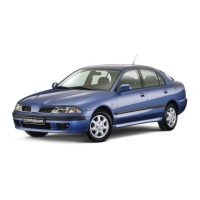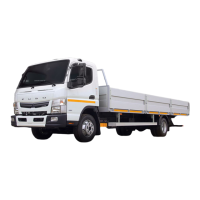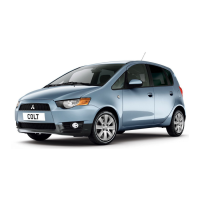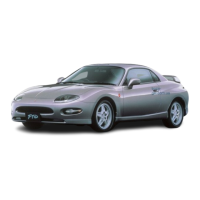SEATS AND SEATBELTS
3–27
G28L085d
Deployment of front air bags
The front air bags ARE DESIGNED TO DEPLOY when...
The front air bags are designed to deploy
when the vehicle suffers a moderate to se-
vere frontal impact. Typical conditions are
shown in the illustration:
1- Head-on collision with a solid wall at a
speed of approximately 25 km/h
(15 mph) or higher
2- Moderate to severe frontal impact
within the shaded area between the
arrows
The front air bags will deploy if the severity of
the impact is above the designed threshold
level, comparable to an approximately
25 km/h (15 mph) collision when impacting
straight into a solid wall that does not move
or deform. If the severity of the impact is
below the above threshold level, the front air
bags may not deploy. However, this thresh-
old speed will be considerably higher if the
vehicle strikes an object that absorbs the im-
pact by either deforming or moving (for
example, another stationary vehicle, pole or
a guard rail).
Because frontal collisions can easily move
you out of position, it is important to always
properly wear your seat belts. Your seat belts
will help you to keep a safe distance from the
steering wheel and instrument panel during
the initial stages of air bag deployment. The
initial stage of air bag inflation is the most
forceful and can possibly cause serious or
fatal injuries. Moreover, the seat belts in your
vehicle are your primary means of protection
in a collision. The SRS (Supplemental Re-
straint System) air bags are designed to pro-
vide additional protection. Therefore, for your
safety and the safety of all occupants, be
sure to always properly wear your seat belts.

